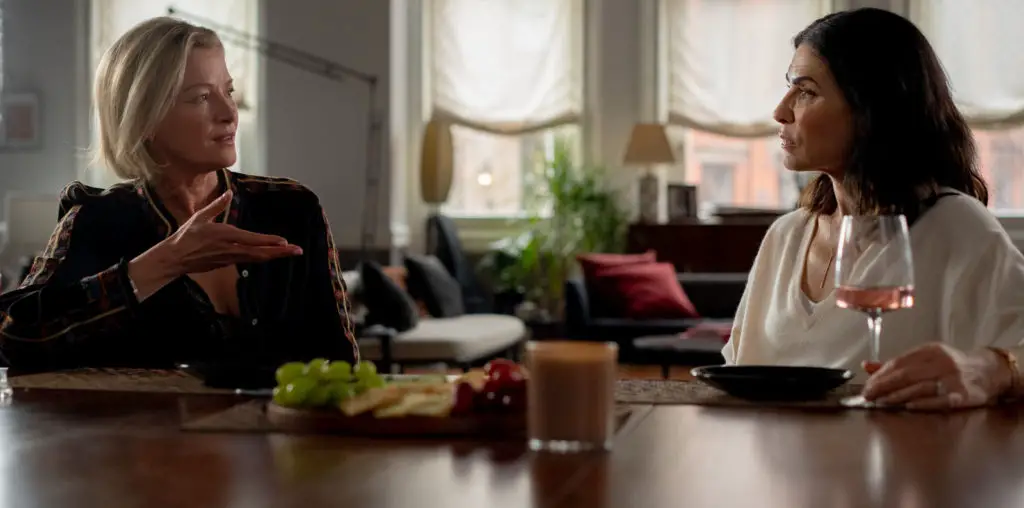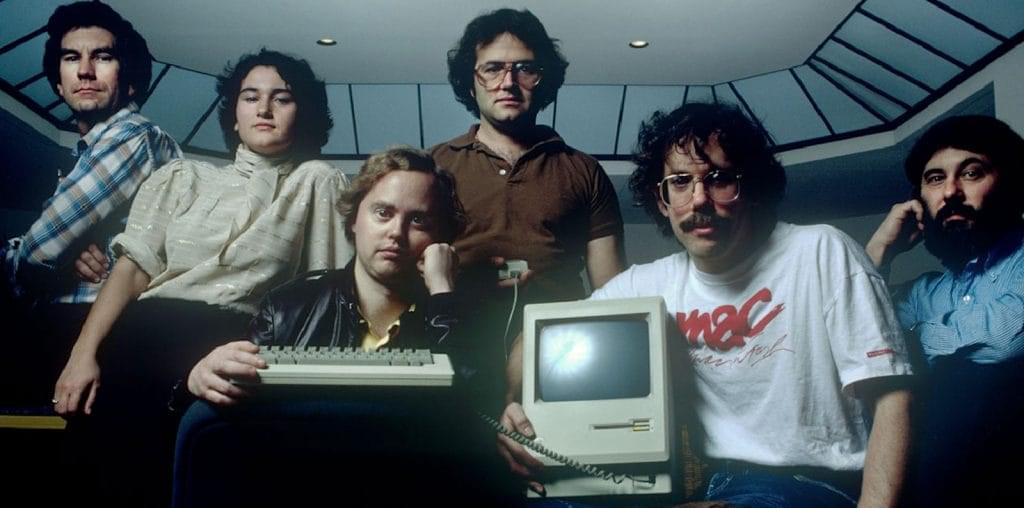
There’s a square in every love triangle. “The Baxter” re-invents the mush-ball love story, focusing instead on the poor sap left at the altar. With much glee, Showalter conveys in demented detail how this second banana bachelor got that far up the aisle to begin with.
Told in a time-loop of first impressions, accidental confessions and unexpected revelations, “The Baxter” never loosens its grip on the funny side of getting jilted.
“The Baxter” is a sweetly tart tale of settling for Mr. Wrong (Elliot- M. Showalter) while Miss Right (Cecil- Michelle Williams) is right under your sheets. This sparkling farce is a comedy of manners that never turns mean, allowing crisp characters to make missteps and mistakes without devolving into villains or buffoons. It’s rare to see a romantic comedy where the camera pulls back to showcase screwball blocking instead of relying on tight-shot/chop-sockey editing.
In “The Baxter,” lingering body language tells part of the story. Princeton, NJ native and Brown University grad Michael Showalter swiftly left his twisted mark on TV with “The State” on MTV and “Stella” on Comedy Central, in addition to the big screen; having written/starred in the Sundance favorite Wet Hot American Summer.
Sticking close to his Stella-mates, Showalter brought in comedy troupe co-horts Michael Ian Black and David Wain to help breathe “The Baxter” to life, but the overall vision is his. Showalter took a break from doodling dweebs in tweed blazers (drawing relaxes him) to share a few inspirations and shed light on one obvious question: What the hell is a “Baxter?”
Baxter = (Dexter + Bowler) x getting dumped
I wanted something that sounded old-fashioned, stiff but regal; a cross between a Dexter and a Bowler. He’s true to form. When the girl leaves him, the Baxter agrees it’s all for the best and concedes that breaking-up is the right thing to do. It’s a convention to let the audience off the hook so they don’t have to sympathize for him, but in my story it’s not so easy. We stay with the Baxter and follow his story to the end. While the Baxter is universal he is also a reflection of me in many ways.
What kind of films helped shape the “screwball” framework for “The Baxter”?
This film harkens back to those great silly romantic comedies from the 1930/40s like “The Awful Truth” and “His Girl Friday”. I love the sweetness of those films. They were graceful films that made us laugh very hard without needing to shock.
Any recent romantic comedies lend inspiration?
“Sleepless in Seattle” was a recent film of “Baxter” enlightenment. I thought: What would happen if instead of watching Meg Ryan and Tom Hanks fall in love (where the girl gets spirited away), we followed Bill Pullman’s character; the man left behind. How did everything work-out for him? Does he finally find love too? I really identified with his struggles.
This film is a triple challenge for you, working as writer/director and actor.
The decision to direct was easy, committing to play the role of Elliot (the Baxter) was a struggle. I had envisioned a better looking man for the part. I was trying to play this major character, work with fellow actors while directing my first feature film. It was a very steep learning curve. Luckily I was surrounded by a very talented cast and crew who taught me and helped pick-up the slack.
How has your approach to humor/comedy changed from earlier projects?
I wanted to keep a sense of play and edginess that fans of “Stella” and “Wet Hot American Summer” could appreciate, but also make something that my parents could enjoy too.
There are many spot-on casting choices, alum from “Wet Hot American Summer” and more?
I like to work with a troupe of familiar faces (such as Paul Rudd) while working with Michelle Williams, Elizabeth Banks and Peter Dinklage was a huge delight. Justin Theroux (often seen in darker roles) turns in a wildly comedic performance with heart.
Wedgie alert: Michael Ian Black. He is continuously seen on-camera spewing wisdom wearing only stretchy/lacey underoos.
That was all his idea. MIB’s homage to “Notting Hill”.
Films told in flashback are a difficult feat. How challenging was this to pull-off?
Our original editor was Jacob Craycroft and as the process progressed we were lucky enough to get talented editor Sarah Flack onboard who worked on “The Limey” and Lost in Translation. It was she who deconstructed and then restructured the film to use key flashback elements: beginning at the altar and then unraveling the story backward through twists and turns.
The audience gets to experience a romanticized NYC yet you manage to convey a modern setting unburdened by gadgetry.
I wanted to lend a timeless feel to the movie. There is nothing more unattractive onscreen, for me, than watching someone talk on a cell phone. In “The Baxter,” there are very few glimpses of laptops, mobile phones and other high-tech devices.
Any last impressions you hope the audiences share?
In the end, there’s nothing really wrong with him (The Baxter). I think that Elliot learns to accept himself for who he is. “The Baxter” ends with a ray of hope for any hopeless romantic who believes everybody is right for somebody.

